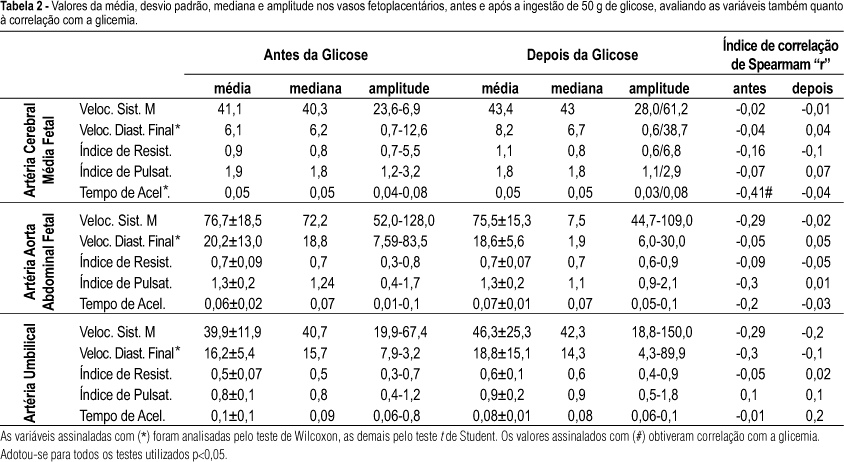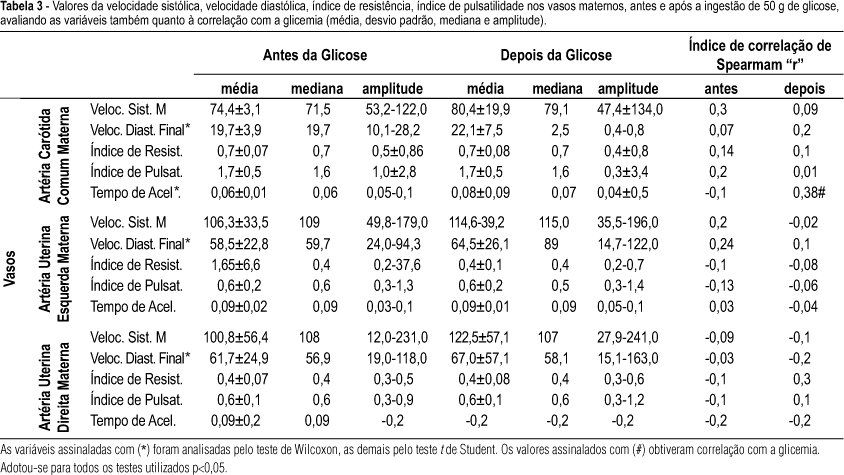PURPOSE: to analyze the effect of glucose in the materno-fetal hemodynamics through dopplervelocimetric assessment of the materno-fetal and fetoplacentary circulation. METHODS: the study was carried out by a single observer on 31 clinically healthy pregnant women from the 28th to the 36th gestational week. Parameters were assessed immediately before or 60 minutes after the ingestion of 50 g of glucose. The including criteria comprised normal clinical and laboratorial evaluation, the presence of only one fetus, gestational age between 28 and 36 weeks confirmed by ultrasonography and/or the date of the last menstruation, fasting glycemia less or equal to 110 mg/dL and less than 140 mg/dL after 50 g of glucose overload. The excluding criteria consisted of the presence of fetal malformation or development alterations, labor, diabetes as a family predisposition, pathologies due to or underlying gestation and use of tobacco, alcohol and/or other substances. The mother´s common carotid artery and uterine arteries, the umbilical artery and the fetal medial cerebral artery and abdominal aorta were evaluated. In each blood vessel, the following parameters were analyzed: resistance index, pulsatility index, maximum systolic speed, final diastolic speed and acceleration time. The fetal heart rate was evaluated by M Mode ultrasonography. For the statistical analysis, the Student's t test was used when the variable presented normal distribution in Kolmogorov-Smirnov's test. When normality was rejected, the Wilcoxon's non-parametric test was used, with the significance level always established at p<0.05. RESULTS: the maternal glycemia increased after the ingestion of 50 g of glucose (before: 68.0±10.1 mg/dL and after: 104.6±28.2 mg/dL; p<0.001), and fetal heart rate decreased after the glucose ingestion (before: 137.9±6.1 bpm and after: 134.5±6.9 bpm; p<0.001). The umbilical artery presented an increase in the pulsatility index (before: 0.8±0.1 and after: 0.9±0.2; p=0.03). Significant velocimetric alterations were not found in the other vessels or in the other indexes investigated. CONCLUSIONS: in spite of the variation in the levels of maternal glycemia and in the fetal heart rate following glucose ingestion, no significant flow alteration occurred in the following vessels: umbilical artery, fetal medial cerebral artery and aorta; nor in the carotid and uterine maternal arteries. We conclude that the glucose concentration used was released without hemodynamic interference in the materno-fetal compartment.
Blood glucose; Laser-doppler; flowmetry; Heart rate, fetal; Glucose; Umbilical artery; Placental circulation; Hemodynamic processes



